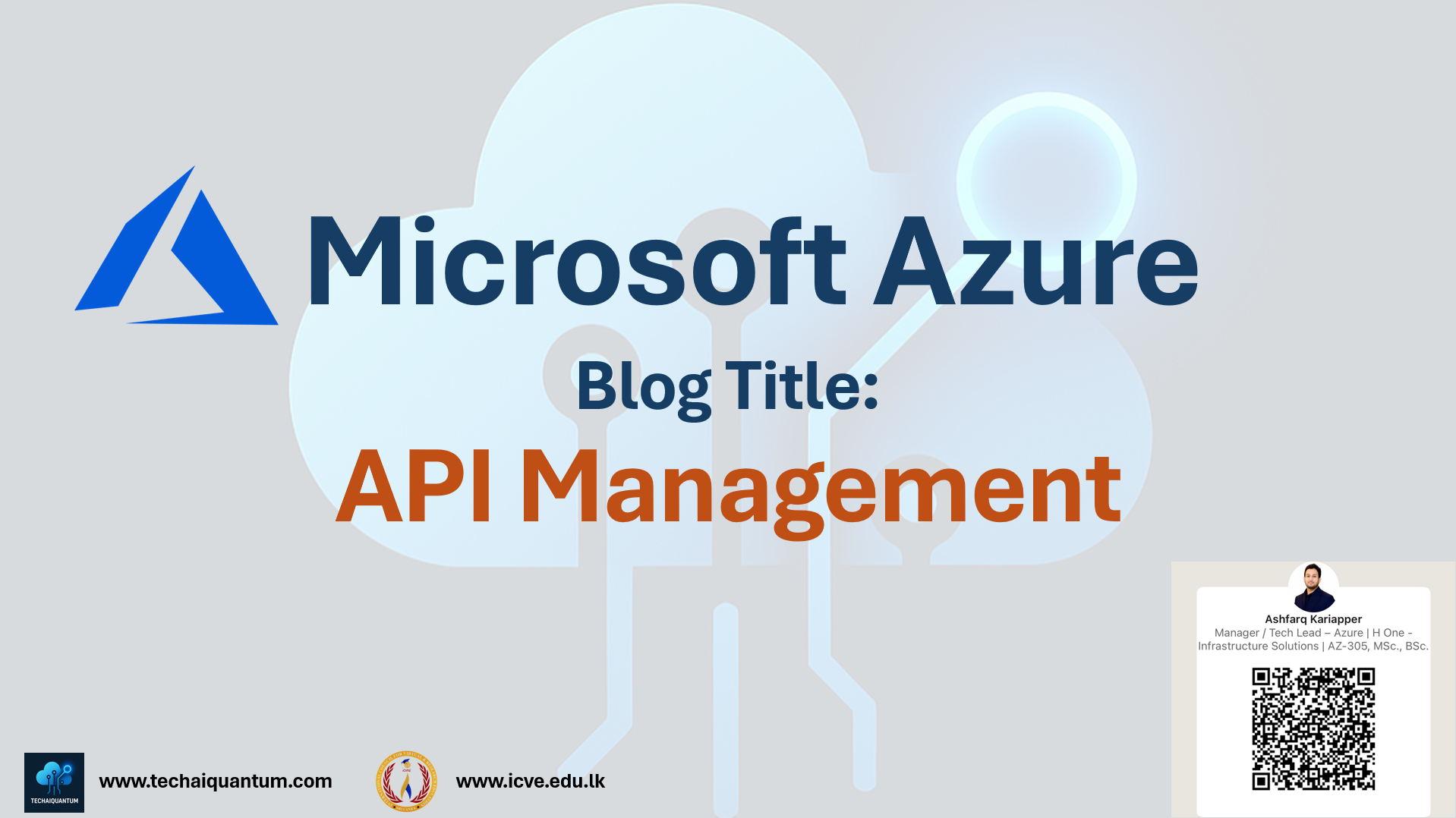As a Cloud Solution Architect working across multiple enterprises from government sectors to banks, manufacturing, ERP migrations, and large-scale digital transformations. one platform I repeatedly rely on is Azure API Management (APIM).
Over the years, APIM has become a core component in almost every architecture I design. Not because it’s a Microsoft product, but because it solves real-world problems that most organizations eventually face when their API footprint grows.
In this blog, I want to share my hands-on experiences, real project scenarios, and the practical reasons why APIM becomes essential once businesses start maturing in their cloud journey.
As organizations move toward API-first architectures, microservices, hybrid integration, and multi-cloud strategies, one challenge becomes universal: How do we securely expose, manage, standardize, and monitor APIs across distributed systems?
This is where Azure API Management (APIM) becomes an essential component. It is not just an API gateway, it’s a full-fledged API governance and management platform designed to bring structure, security, and predictability to increasingly complex API ecosystems.
What is Azure API Management?
Azure API Management (APIM) is a fully managed service from Microsoft Azure that enables organizations to publish, secure, analyze, and manage APIs in a centralized way. It acts as a front door for your backend services, whether they are in Azure, on-premises, multi-cloud, legacy systems, or modern microservices.
APIs are the foundation of an API Management service instance. Each API represents a set of operations available to app developers. Each API contains a reference to the backend service that implements the API, and its operations map to backend operations.
Operations in API Management are highly configurable. You have control over URL mapping, query and path parameters, request and response content, and operation response caching.
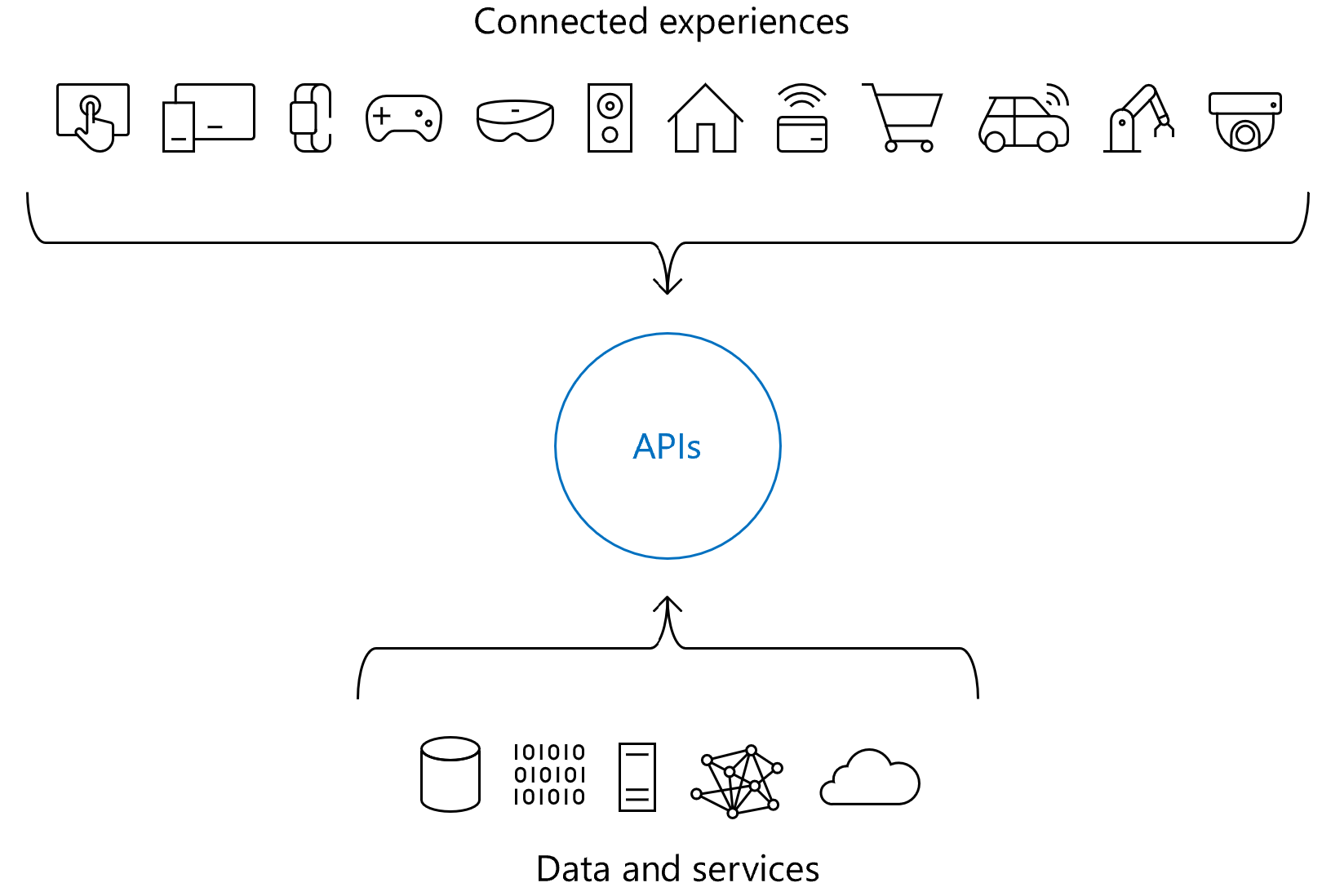
API Management offers over 50 declarative policies, including rate limiting, quotas, authentication, content validation, caching, transformation, and others. Policies can be applied at varying scopes (such as apply to all APIs or to a single API) and can be dynamically customized and conditionally evaluated using policy expressions.
Refer to this link:
https://learn.microsoft.com/en-us/azure/api-management/api-management-key-concepts
To go through the
Feature-based comparison of the Azure API Management tiers
Visit the following link:
https://learn.microsoft.com/en-us/azure/api-management/api-management-features
Why APIM: The Strategic Layer Between Clients and Backends?
At its core, Azure API Management sits between your API consumers (applications, partners, devices, mobile apps, etc.) and your backend systems (APIs, microservices, databases, legacy services, and more).
What makes APIM powerful is its ability to provide a consistent management layer, regardless of where your backend lives; Azure, on-prem, containers, or other clouds. This is especially important for organizations dealing with legacy ERPs, hybrid workloads, and distributed microservices.
APIM essentially becomes the control plane for all API traffic.
APIM is not just an API gateway. It’s an entire API governance layer; centralizing control, securing integrations, scaling backend services, and standardizing consumption across partners and internal teams.
When you handle:
- Multi-region users
- Legacy backend integrations
- API monetization
- Controlled partner access
- Multi-tenant models
- Zero-trust security
- Hybrid & on-prem connectivity
...APIM becomes the “front door” to your digital ecosystem.
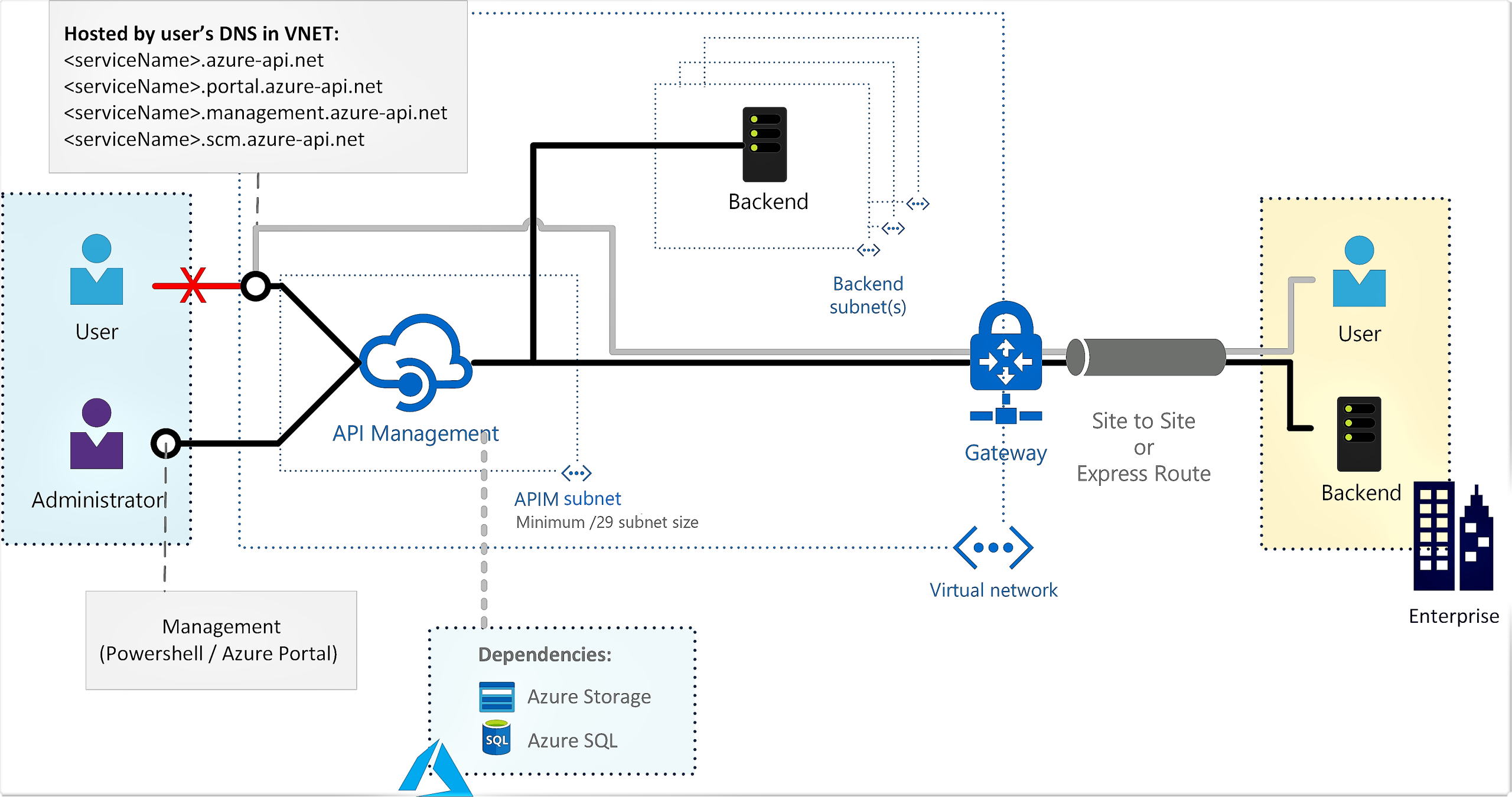
Azure API Management with an Azure virtual network
The Core Components of APIM

- API Gateway
The gateway is the most critical runtime component. It handles the following:
- Routing requests to backend services
- Enforcing authentication and authorization
- Throttling traffic
- Applying quotas and rate limits
- Transforming requests/responses
- Handling caching
- Providing protocol and format mediation
- Management Plane
This is where cloud architects and API developers spend their time. The management plane enables you to:
- Create and import APIs (OpenAPI, SOAP, GraphQL, Function Apps, etc.)
- Apply policies to enforce consistent behavior
- Manage versions, revisions, and products
- Configure security mechanisms
- Manage subscriptions and access
- Integrate APIM configurations into CI/CD pipelines
- Developer Portal
One of the most underrated features of APIM is its automatically generated Developer Portal. This becomes the consumer-facing documentation hub where developers can:
- Explore APIs
- Read auto-generated documentation
- Test endpoints using the “Try It” feature
- Retrieve subscription keys
- Learn onboarding steps
For enterprises working with partners, vendors, or external developers, this portal drastically reduces dependency on manual documentation and email-driven support.
- Self-Hosted Gateway (Hybrid Integration)
For organizations running on-prem workloads, APIM provides a self-hosted gateway that runs in containers or Kubernetes. This enables:
- Local routing for APIs that cannot be exposed directly to the cloud
- Hybrid API governance
- Multi-cloud consistency
- Edge use cases for latency-sensitive services
This is a game changer for enterprises modernizing gradually without migrating everything to Azure.
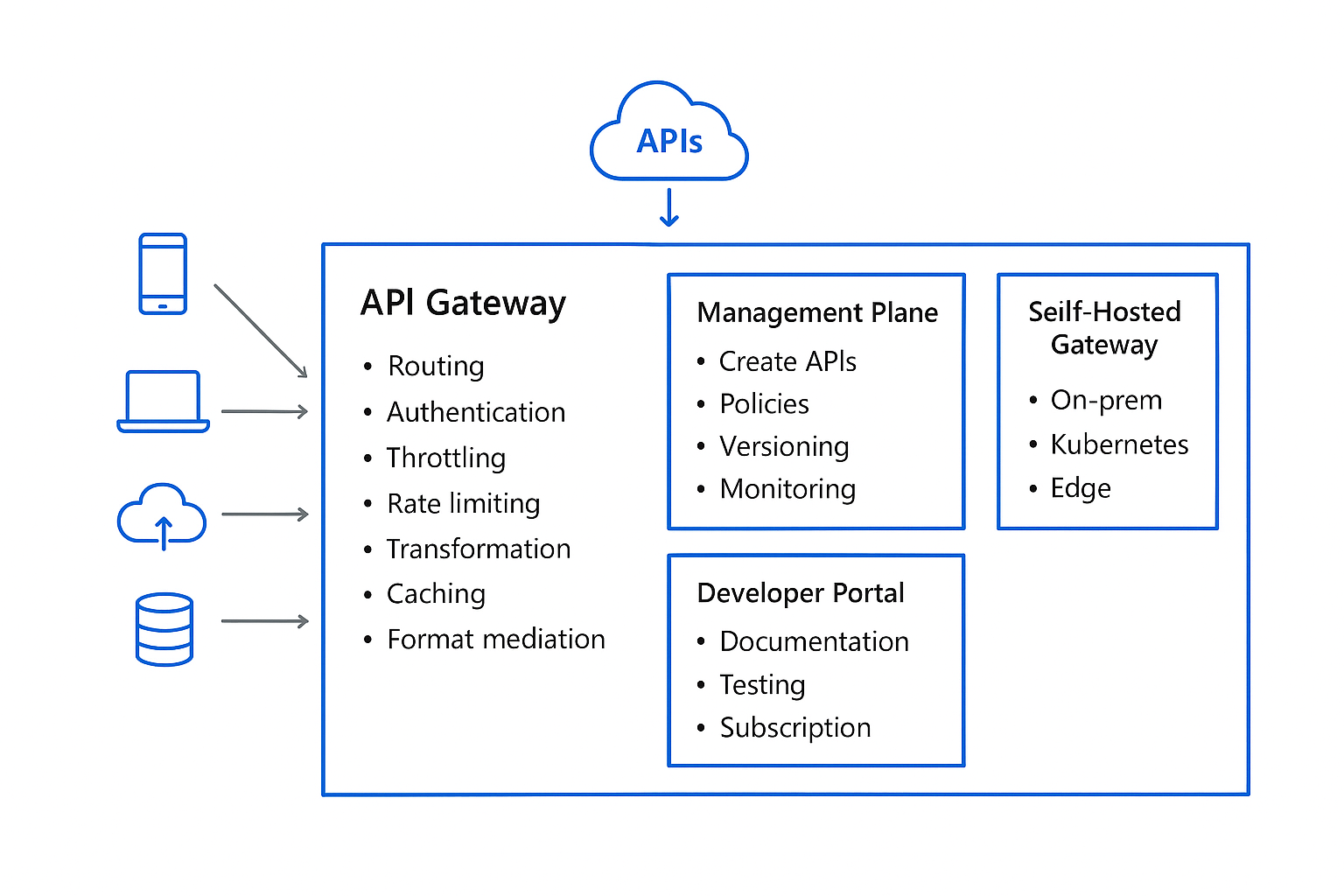
This is an AI generated image
API Management tiers
API Management is offered in various pricing tiers to meet the needs of different customers. Each tier offers a distinct combination of features, performance, capacity limits, scalability, SLA, and pricing for different scenarios. The tiers are grouped as follows:
- Classic
The original API Management offering, including the Developer, Basic, Standard, and Premium tiers. The Premium tier is designed for enterprises that require access to private backends, enhanced security features, multi-region deployments, availability zones, and high scalability. The Developer tier is an economical option for nonproduction use, while the Basic, Standard, and Premium tiers are production-ready tiers. - v2
A new set of tiers that offer fast provisioning and scaling, including Basic v2 for development and testing, and Standard v2 and Premium v2 for production workloads. Standard v2 and Premium v2 support virtual network integration for simplified connection to network-isolated backends. Premium v2 also supports virtual network injection for full isolation of network traffic to and from the gateway. - Consumption
A serverless gateway for managing APIs that scales based on demand and bills per execution. This tier is designed for applications with serverless compute, microservices-based architectures, and variable traffic patterns.
Refer to this link: https://learn.microsoft.com/en-us/azure/api-management/api-management-key-concepts#api-management-tiers
Security and Identity: The Foundation of APIM
APIM integrates deeply with modern identity systems. You can enforce:
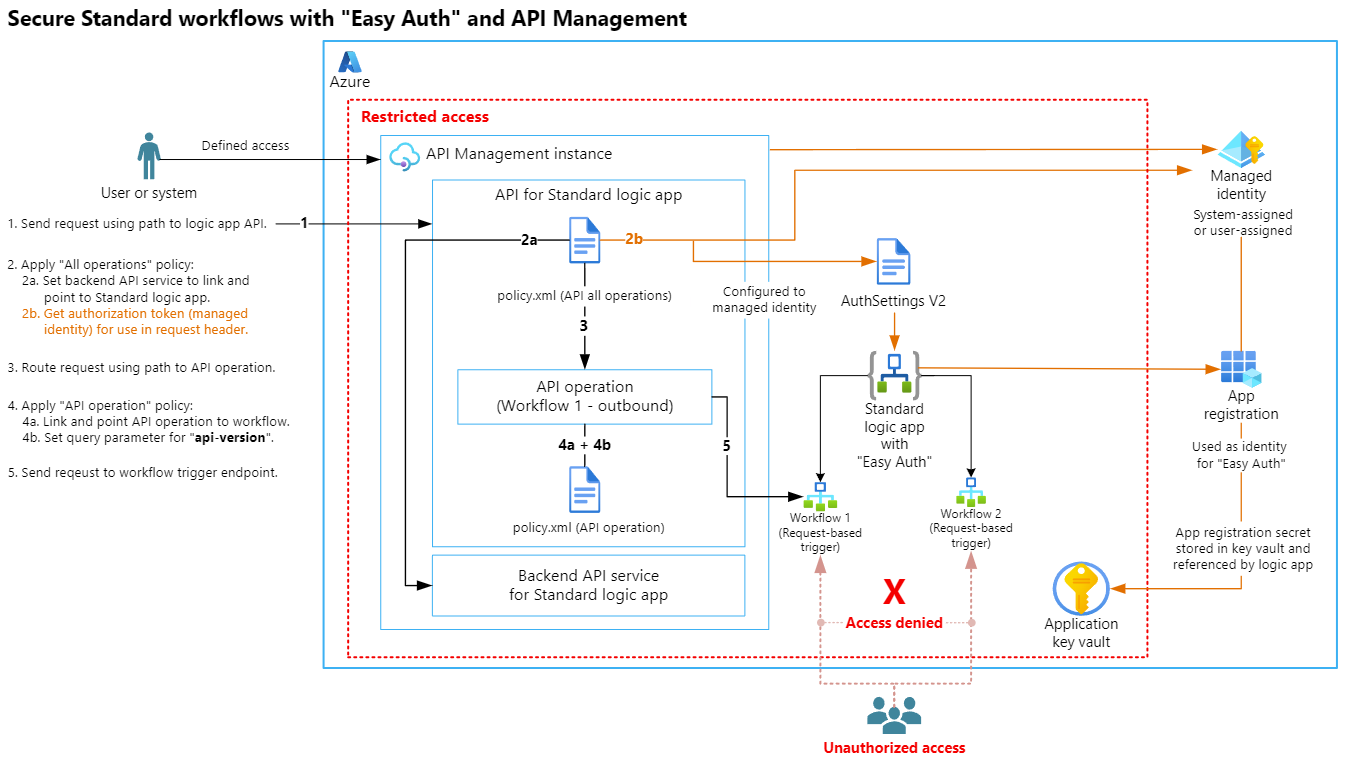
Image: Secure standard workflow with "Easy Auth" and APIM
- OAuth2 and OpenID Connect
- JWT token validation
- Certificate-based authentication
- IP restrictions and network isolation
- VNET integration
- Private endpoints
- Mutual TLS
Policies give you granular control without touching backend code. For example, validating tokens or rewriting headers can be done directly at the gateway.
In highly regulated industries like banking, government, healthcare; APIM becomes the security perimeter for API access.
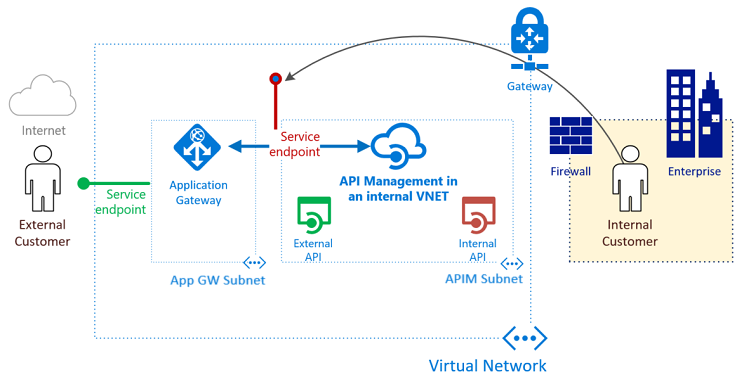
Image: Architecture of single API Management instance for internal and external consumers and make it act as a single front end for both on-premises and cloud APIs.
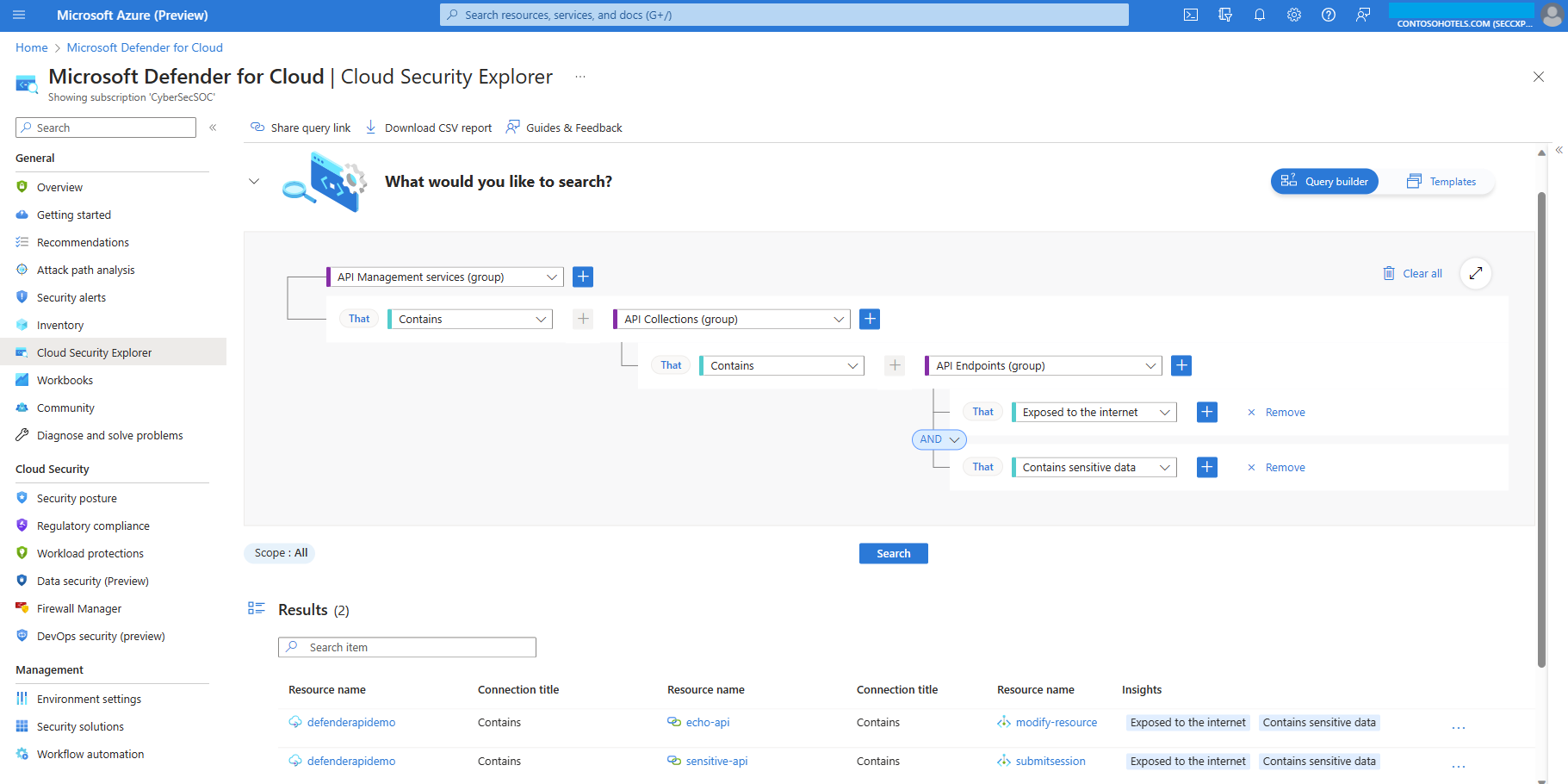
Image: Microsoft Defender for Cloud for APIs.
Microsoft Defender for Cloud provides unified security management and advanced threat protection across hybrid cloud workloads. With Defender for Cloud, you can apply security policies across your workloads, limit your exposure to threats, and detect and respond to attacks.
The Policy Engine: APIM’s Secret Superpower
What differentiates APIM from many gateways is the XML-based policy engine. Policies allow you to modify and control API behavior at the gateway level. Some of the capabilities include:
- Transformations
- XML to JSON
- JSON to XML
- Header manipulation
- Body rewriting
- URL rewriting
- Traffic Management
- Rate limiting
- Quotas
- Caching
- Retry and timeout policies
- Fault Handling
- Custom error messages
- Circuit breaker patterns
- Conditional routing
- Request Enrichment
- Injecting correlation IDs
- Calling external services to enrich a request
- Adding metadata for observability
This gives architects the ability to modernize APIs without touching the backend, which is particularly useful when working with legacy systems.
Moreover, the APIM Service can integrate with the Monitoring/Analytics Services like Azure Monitor, Application Insights, Log Analytics or SIEM Integration as well. And these insights will help engineering teams with root-cause analysis, performance tuning, chargeback models, and capacity planning.
API Lifecycle
---------- ---------------- ----------- Need to Fill ----------------- ----------- --------------
Scenarios from My Work
Below are real situations I’ve encountered with customers, and enterprise accounts manage through Azure Lighthouse.
Scenario 1: Modernizing Legacy ERP APIs with APIM
One of the first major APIM implementations I handled was for a company migrating their legacy ERP to Azure. the challenge was their core applications still ran on-premises, exposing REST APIs built nearly 10 years ago (this blog was written on 15/Nov/2025) with no authentication, no rate limits, no proper versioning. Calling them directly was risky and unstable.
Our Solution offered the following:
- Enforced OAuth2 authentication
- Applied rate limiting to prevent system overload
- Transformed request/response formats without touching backend code
- Cached frequently used data to reduce pressure on on-prem systems
- Introduced version control (v1, v2, beta versions)
The best part was when the ERP vendor insisted “We must modify the API code to support this new app.”
My answer was simple: “No need. We’ll transform everything from APIM.”
By adding request/response transformation policies, we saved them months of development.
Scenario 2: A Bank with 3rd-Party FinTech Integrations
Working with a financial institution, API security and governance were priority #1.
- Different bandwidth
- Different rate limits
- Separate authentication
- Custom throttling policies
- Detailed logs for compliance audits
Managing this manually was impossible (on my purview).
As part of our solution:
We established a Publisher–Consumer Model using APIM the Key capabilities used are the following:
- Separate products for each fintech.
- Subscription keys to identify consumers
- IP whitelisting via policies
- Per-consumer throttling
- Logs sent to Azure Monitor > SIEM Outcome (will discuss on the upcoming blog)
The solution aligned perfectly with the bank’s compliance and audit expectations. A fintech partner once said: “Your API portal looks like a fully built developer platform.” That’s because APIM automatically generates Developer Portal with the following:
- API documentation
- Swagger test console
- Access keys
- Try-out feature
- Self-service provisioning
This alone boosted their partner onboarding experience tremendously.
Scenario 3: Integrating 50+ Tenants with Centralized Governance (Azure Lighthouse)
- POS Systems
- ERP Integrations
- Mobile Apps
- Partner Systems
Every customer had different API standards and multiple environments (Dev/Test/Prod). But we needed centralized visibility.
As part of our solution:
We introduced a Shared API Governance Model using APIM. it helped by the following:
- By having a Central policies that are applied across all tenants.
- Was able to have an API versioning standard.
- We were able to have a consistent logging and monitoring of the APIs.
- Enhance the Security baselines for all tenants.
- We were able to scale the reusable API templates.
So whenever a customer requested: “Can you expose this new API for our mobile app?”
Now I could deliver it within minutes using APIM’s versioning & cloning capabilities.
Key Takeaways
✔️APIM becomes essential once you have more than 5–10 APIs
You’ll need standard policies, versioning, and secure exposure.
✔️ Don’t expose backend APIs directly
Always front them with APIM for safety and governance.
✔️ Create separate APIM instances for Dev → Test → Prod
Avoid mixing environments.
✔️Use policies to eliminate backend development overhead
Especially when dealing with legacy systems.
✔️ Version everything
Never break existing applications chain or its previous state.
✔️ Use caching aggressively to improve performance
Especially for on-prem connectivity.
Conclusion:
Why I Always Recommend Azure API Management
Working across dozens of customers and hundreds of APIs, my biggest takeaway is:
**APIM is not just an API gateway. It is a business enabler.**
It accelerates integration, secures your digital ecosystem, reduces development friction, and provides unparalleled governance.
If your organization is embarking on the following:
- Digital transformation
- ERP modernization
- Partner integrations
- Multi-cloud connectivity
- Secure API exposure
- Hybrid systems
…then Azure API Management will play a critical role.

